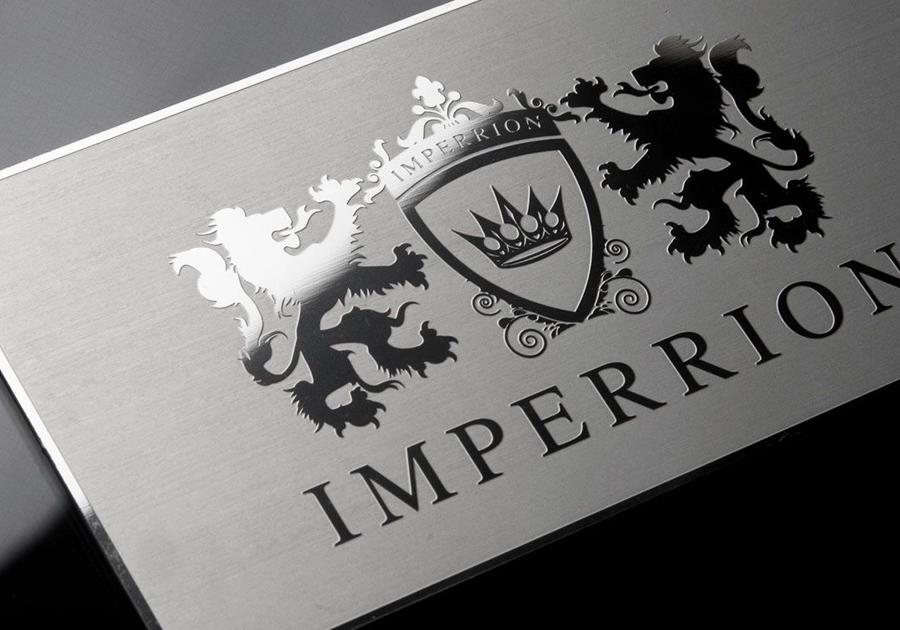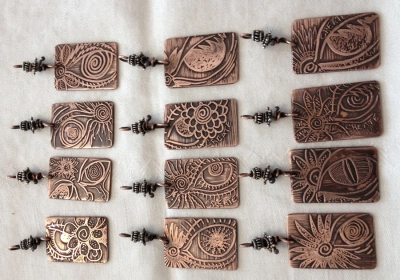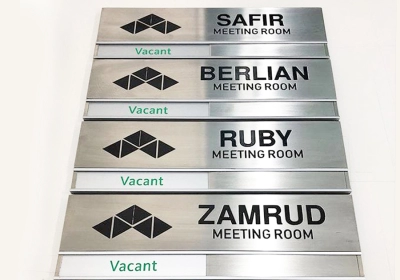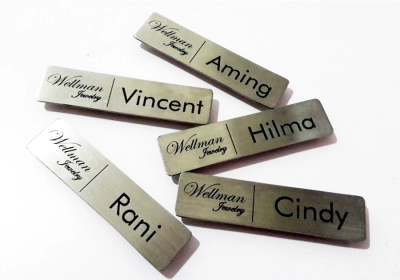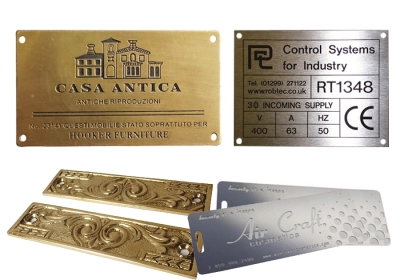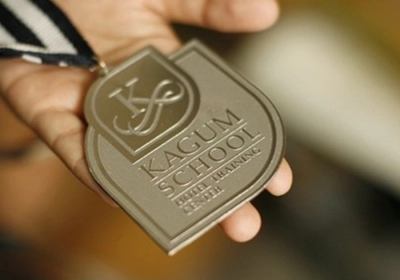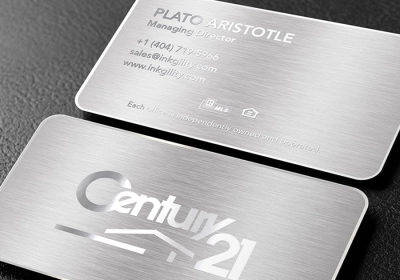Etching Metal Printing |
Etching Metal Printing at Bali Print ShopEtching printing on a metal plate as in stainless and brass is a process where corrosive chemicals are used to etch complex shapes from a sheet of stainless metal plate. Bali Print Shop custom Etching label and logos are an accurate process that produces parts with a high level of complexity without mechanical stress on the material. Etching BrassBrass is a copper-zinc alloy. It is known for its high malleability, low melting point, cutability and antimicrobial effect on microorganisms and pathogens. Etching Stainless SteelStainless is a metal with a rust-resistant surface made of a mass mixture of chromium. Stainless because it is rust resistant is very popular in its use. It is corrosion resistant, oxidation resistant, hypoallergenic and very strong and durable. Etching CopperCopper offers many useful characteristics, including: softness, malleability, ductility, thermal conductivity and electrical conductivity. Because it has so many desirable properties, it is a component of many alloys, including brass, nickel silver and bronze. Multi-Purpose Etching Printing for Brand CompaniesDue to its versatility, it is used in a wide variety of products in many industrial sectors. Chemical etching of Stainless Steel on the metal surface area can be made Debossed or Embossed, without distortion. With stainless steel plate or Brass that can withstand corrosion and oxidation along with other properties such as excellent ability and ability to withstand cryogenic temperatures, one of the most popular metals is engraved on Advanced Chemical Etching in various thicknesses, grades, Embossed finishes and Debossed. Uses of EtchingMetal etching offers a variety of advantages, regardless of the method and plate material you choose. For example, metal etching is universal, it can be used as machine product labels, hangers, souvenirs, clothing labels, and brand alloys attached to products. |
Custom Etching Laser print on Brass, Stainless, Copper Plates for Names and Logos
Etching Laser print Signs in Bali on Gold Brass, copper and Stainless plates for making names and logos embossed metal in Denpasar, Bali, Indonesia
Etching laser printing is a method of using chemicals to cut a design or pattern into a metal surface. Etching your own designs into metal is easier than it may sound, and it can be a fun and rewarding way to make your own jewelry! Learn the basics of how to choose your metals, choose your etchants, create or transfer your images with resists, and complete the etching process. Discover how to make a float boat for suspending your designs in etchant — plus find basic etching safety precautions, design considerations, and free projects.
What Metals laser parinting can be Etched at Bali Print Shop
Because chemical etching actually cuts into the surface of the metal, you want to make sure your plate or sheet of metal is thick enough to hold an etched design well. We recommend using 22-gauge or thicker metal sheet and pre-cut metal blanks. Options we carry that will work with ferric chloride (see next section) include: Copper plate, stainless steel, gold brass, Nickel Silver.Etchant is the chemical (or mixture of chemicals) that you'll use to cut into unprotected parts of your metal and create the finished etched design. It's important to match your metal with an appropriate etchant, because the same metal will react differently to different chemicals (and vice versa). Copper, brass and nickel silver can be etched with ferric chloride. To avoid order delays and extra shipping charges, please read and follow the shipping restrictions listed with chemicals such as ferric chloride.Types of Etching Metal laser printing at bali Indonesia Print Shop
A resist is what you use to protect certain parts of your metal from the etchant. Resists are typically inks (and tapes). You will apply a design or pattern to the metal with your resist. Then, when you dip your metal into the chemical bath, the covered areas will "resist" being eaten away. Those covered areas will be the high points of your design once the etching process is complete.Acid etching was and is still used in the reproduction of high-quality works of art. The process was initially used as a method of getting the artist's work into the hands of as many people as possible.The engraver takes a plate of copper or mild steel. Then the artist will cover the entire surface of the plate with a waxy substance, referred to a 'ground'. This substance is resistant to the acids chosen to be used.The engraver will then, using a variety of tools, reproduce the original work of art by engraving the image into the waxy ground. The plate will then be submerged in a bath of the mordant, after a prescribed time the plate is removed, rinsed off and the ground removed. The image left will be an exact copy of the engraver's work. This is a very skilled process, it takes time and money to produce works of art this way.Stainless steel etching laser print processOur stainless steel etching process takes stainless steel laminated with a photoresist mask printed with a CAD image of the component, which is then selectively etched with ferric chloride, a safe to use, recyclable etchant chemistry.Suitable steel and stainless steel gradesWe chemically etch ferritic/martensitic, austenitic, duplex and precipitation hardened stainless steel grades from stock. We also machine specialist grades, including Sandvik Chromflex strip steels, and work with customer-supplied metals.
Copper etching service offers a fast, cost-effective alternative to traditional stamping, laser and water-jet cutting.Due to thier delicate, reflective nature, laser cutting and stamping copper-based alloys have proven difficult, often compromising material integrity, flatness or quality of cut.
Aluminium etching uses easily re-iterated and low-cost digital tooling, providing a cost-effective and fast manufacturing alternative to stamping, laser and water-jet cutting. Aluminium and its alloys have always proved difficult to machine. Similarly, with etching, the process is not straightforward. Aluminium releases heat energy during etching, resulting in a rough, granular edge. We have developed a proprietary method for etching aluminium and its alloys, producing cleaner edge profiles with greater accuracy.
Titanium etching is a subtractive metal machining process which uses specialist etchant chemistry to profile complex, highly accurate precision components.

